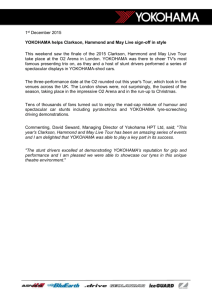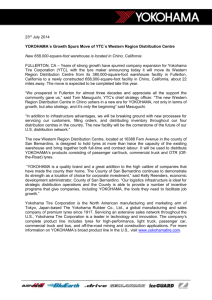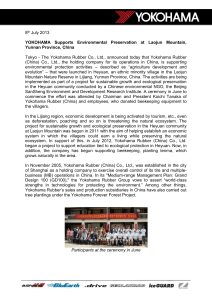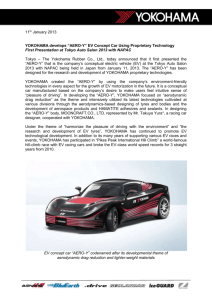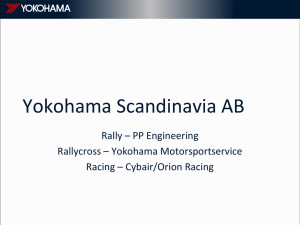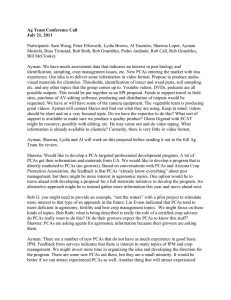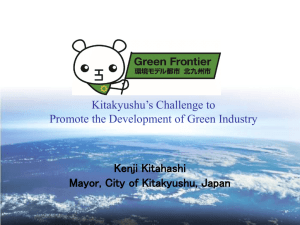VOLUNTARY APPROACHES: TWO JAPANESE CASES
advertisement
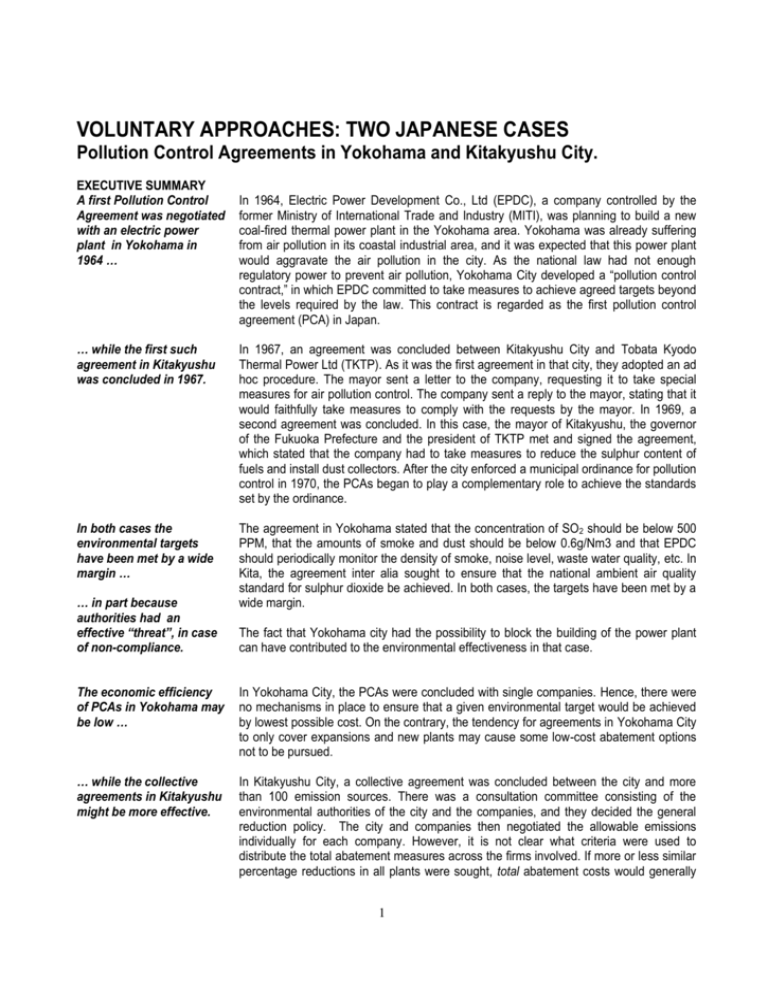
VOLUNTARY APPROACHES: TWO JAPANESE CASES Pollution Control Agreements in Yokohama and Kitakyushu City. EXECUTIVE SUMMARY A first Pollution Control Agreement was negotiated with an electric power plant in Yokohama in 1964 … In 1964, Electric Power Development Co., Ltd (EPDC), a company controlled by the former Ministry of International Trade and Industry (MITI), was planning to build a new coal-fired thermal power plant in the Yokohama area. Yokohama was already suffering from air pollution in its coastal industrial area, and it was expected that this power plant would aggravate the air pollution in the city. As the national law had not enough regulatory power to prevent air pollution, Yokohama City developed a “pollution control contract,” in which EPDC committed to take measures to achieve agreed targets beyond the levels required by the law. This contract is regarded as the first pollution control agreement (PCA) in Japan. … while the first such agreement in Kitakyushu was concluded in 1967. In 1967, an agreement was concluded between Kitakyushu City and Tobata Kyodo Thermal Power Ltd (TKTP). As it was the first agreement in that city, they adopted an ad hoc procedure. The mayor sent a letter to the company, requesting it to take special measures for air pollution control. The company sent a reply to the mayor, stating that it would faithfully take measures to comply with the requests by the mayor. In 1969, a second agreement was concluded. In this case, the mayor of Kitakyushu, the governor of the Fukuoka Prefecture and the president of TKTP met and signed the agreement, which stated that the company had to take measures to reduce the sulphur content of fuels and install dust collectors. After the city enforced a municipal ordinance for pollution control in 1970, the PCAs began to play a complementary role to achieve the standards set by the ordinance. In both cases the environmental targets have been met by a wide margin … The agreement in Yokohama stated that the concentration of SO2 should be below 500 PPM, that the amounts of smoke and dust should be below 0.6g/Nm3 and that EPDC should periodically monitor the density of smoke, noise level, waste water quality, etc. In Kita, the agreement inter alia sought to ensure that the national ambient air quality standard for sulphur dioxide be achieved. In both cases, the targets have been met by a wide margin. … in part because authorities had an effective “threat”, in case of non-compliance. The fact that Yokohama city had the possibility to block the building of the power plant can have contributed to the environmental effectiveness in that case. The economic efficiency of PCAs in Yokohama may be low … In Yokohama City, the PCAs were concluded with single companies. Hence, there were no mechanisms in place to ensure that a given environmental target would be achieved by lowest possible cost. On the contrary, the tendency for agreements in Yokohama City to only cover expansions and new plants may cause some low-cost abatement options not to be pursued. … while the collective agreements in Kitakyushu might be more effective. In Kitakyushu City, a collective agreement was concluded between the city and more than 100 emission sources. There was a consultation committee consisting of the environmental authorities of the city and the companies, and they decided the general reduction policy. The city and companies then negotiated the allowable emissions individually for each company. However, it is not clear what criteria were used to distribute the total abatement measures across the firms involved. If more or less similar percentage reductions in all plants were sought, total abatement costs would generally 1 not be minimised. While administrative costs related to the PCAs were considerable originally … It took more than half a year to conclude the agreement in Yokohama after the construction plan of the coal-fired thermal power station was proposed. The city and EPDC both undertook different tests to estimate the impacts an agreement would have. Further, Yokohama City also submitted a request to MITI for budgetary support to EPDC. All these administrative procedures took time. In Kitakyushu City, a committee with representatives of public authorities and private companies discussed the design of the PCAs. This multiparty consultation helped to streamline the negotiation procedures and reduce the transaction costs. Today, in both cities, one small section handles the matters related to the PCAs together with other work. … they have now decreased, as the agreements play a more minor role. Many PCAs in Japan are used as a supplement to exiting regulations. They are also used as a condition for companies to acquire a permit or licence. The different instruments generally work in the same direction. Japan has “total mass pollutant control” schemes for air and water pollutants. The government designates special areas of control, and allocates emission quotas to prefectures and municipalities. These schemes could perhaps be converted to tradable permit schemes. The present case study will, together with similar case studies of voluntary approaches used in Canada, Denmark and United States and other available material feed in to an OECD report on the use of voluntary approaches in environmental policy, expected to be published in 2003. To download the document Voluntary Approaches: Two Japanese Cases [ENV/EPOC/WPNEP(2002)12/FINAL] for free, visit our website at http://www.oecd.org/env/va. For more information about the OECD’s work on voluntary approaches in environmental policy, contact : Nils Axel Braathen, Environment Directorate, Email: Nils-Axel.Braathen@oecd.org; For more general information about the OECD Environment Programme, visit our website at http://www.oecd.org/env or send an Email to env.contact@oecd.org. 2
